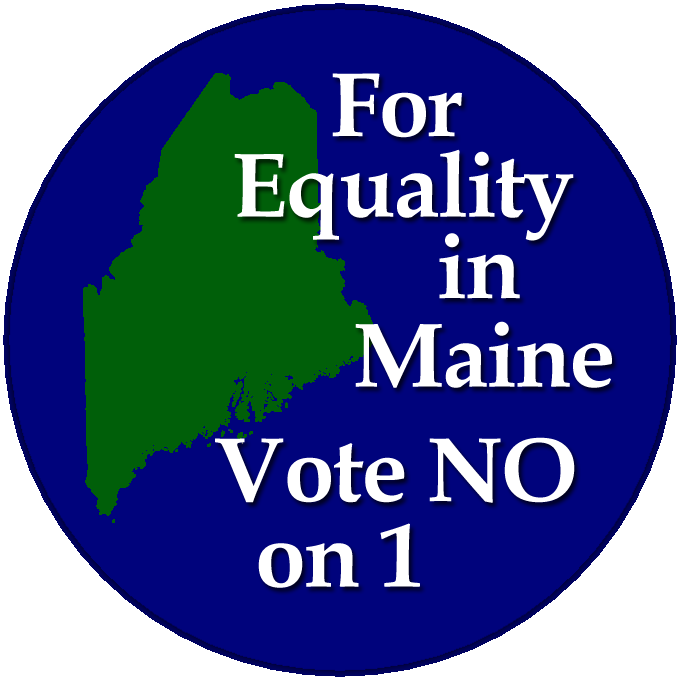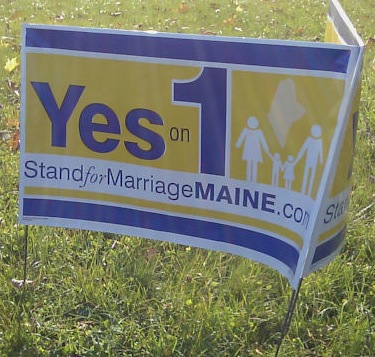From cheerleading to coaching
 Second verse, same as the first. As I continue to read the New York Times coverage of the Maine vote, my mind drifted back to these lines from Daniel Okrent, the newspaper's former ombudsman, in his infamous 2004 column entitled "Is The New York Times a Liberal Newspaper?" News junkies will recall that his lede said bluntly, "Of course it is."
Second verse, same as the first. As I continue to read the New York Times coverage of the Maine vote, my mind drifted back to these lines from Daniel Okrent, the newspaper's former ombudsman, in his infamous 2004 column entitled "Is The New York Times a Liberal Newspaper?" News junkies will recall that his lede said bluntly, "Of course it is."
But on the subject of news "templates" or "maps," here is a thought for the second day of coverage, drawn from Okrent's survey of his newspaper's coverage in a host of sections:
... (For) now my concern is the flammable stuff that ignites the right. These are the social issues: gay rights, gun control, abortion and environmental regulation, among others. And if you think The Times plays it down the middle on any of them, you've been reading the paper with your eyes closed.
But if you're examining the paper's coverage of these subjects from a perspective that is neither urban nor Northeastern nor culturally seen-it-all; if you are among the groups The Times treats as strange objects to be examined on a laboratory slide (devout Catholics, gun owners, Orthodox Jews, Texans); if your value system wouldn't wear well on a composite New York Times journalist, then a walk through this paper can make you feel you're traveling in a strange and forbidding world.
And then on the specific issue of the day:
... (It's) one thing to make the paper's pages a congenial home for editorial polemicists, conceptual artists, the fashion-forward or other like-minded souls (European papers, aligned with specific political parties, have been doing it for centuries), and quite another to tell only the side of the story your co-religionists wish to hear. I don't think it's intentional when The Times does this. But negligence doesn't have to be intentional.
The gay marriage issue provides a perfect example. Set aside the editorial page, the columnists or the lengthy article in the magazine ... that compared the lawyers who won the Massachusetts same-sex marriage lawsuit to Thurgood Marshall and Martin Luther King. That's all fine, especially for those of us who believe that homosexual couples should have precisely the same civil rights as heterosexuals.
But for those who also believe the news pages cannot retain their credibility unless all aspects of an issue are subject to robust examination, it's disappointing to see The Times present the social and cultural aspects of same-sex marriage in a tone that approaches cheerleading.
The Gray Lady is also capable of coaching, as well as cheerleading.
This brings us to a post-election A1 piece that caught my eye. Just to be right up front about this, please note that (a) I know that this is an analysis piece and that (b) I believe that the piece is a valid part of the Times coverage. With those points in mind, check out the piece that ran under the headline, "Gay Rights Rebuke May Change Approach." Here's the top of the story:
They had far more money and volunteers, and geography was on their side, given that New England has been more accepting of same-sex marriage than any other region of the country. Yet gay rights supporters suffered a crushing loss when voters decided to repeal Maine's new law allowing gay men and lesbians to wed, setting back a movement that had made remarkable progress nationally this year.
Maine, with its libertarian leanings, had seemed to offer an excellent chance of reversing the national trend of voters rejecting marriage equality at the ballot box. Instead, it became the 31st state to block same-sex marriage through a public referendum. ...
State legislatures had been viewed as new allies in the fight for same-sex marriage after lawmakers in Maine, Vermont and New Hampshire approved such bills this year. But now, with Maine voters dealing a rebuke to their Legislature, it is far from clear whether elected officials -- including the president -- will risk political capital on gay rights. Tuesday's defeat is also likely to further splinter a movement that has been debating the best tactics for success.
 Thus, the purpose of this analysis piece is to allow debate on which tactics would work best for the gay-rights cause, given the fact that voters seem determined to deliver the movement defeats at the ballot box.
Thus, the purpose of this analysis piece is to allow debate on which tactics would work best for the gay-rights cause, given the fact that voters seem determined to deliver the movement defeats at the ballot box.
By the way, one or two opponents of gay-marriage are quoted, primarily to offer commentary on the tactics of the left.
Like I said, it's a valid analysis piece. It's rather like a talking-points memo for the gay-rights cause, but that is part of this national news story right now.
Here's my question: Can anyone imagine this analysis piece being half of a package -- targeting a wider, national audience on this issue -- that includes a similar analysis, one that is the same length and is reported with the same care, only focusing on the debate inside the other camp on what to do next?
Can you imagine an A1 Times piece that offers a similar set of talking points for those who favor a traditional definition of marriage, perhaps a report that focuses on the ongoing divide on the cultural right between those who favor laws promoting civil, secular same-sex unions and those who oppose any concessions on this issue at all?
That's a valid story, too. Ask the Rev. Rick Warren.
Here's one more thought, since I am a pro-newspaper kind of guy. In these troubled times for the Times, would it make both journalistic sense to print this two-sided package, as well as economic sense in light of the newspaper's goals of maintaining or even growing its base as a national news product?
Just asking. Why not cover material that would address issues both sides? Might this balanced approach even make activists on both sides a bit uncomfortable?
Just a reminder: Do not debate the issues behind the Maine vote. The goal is to discuss the Times and the journalistic product if offered to its readers, following the vote.